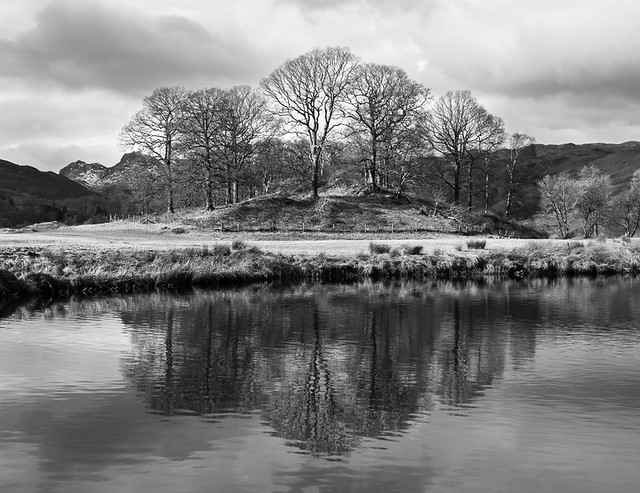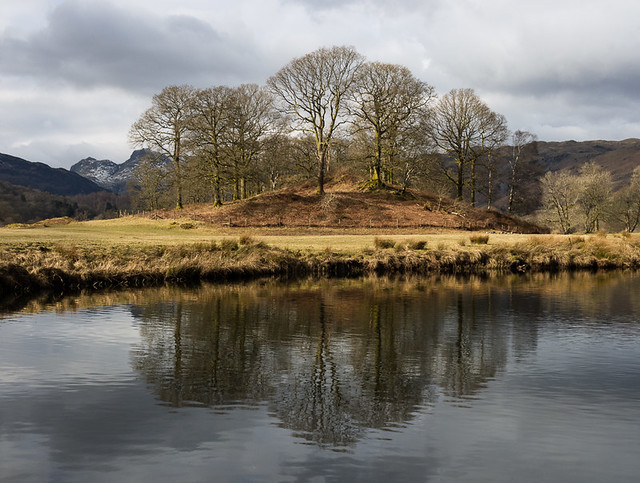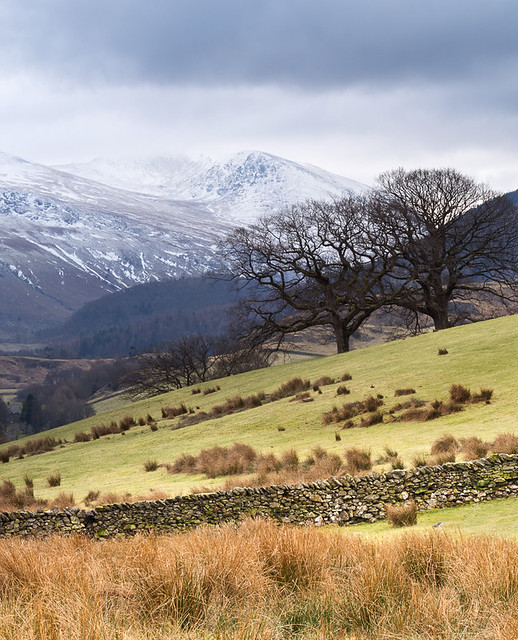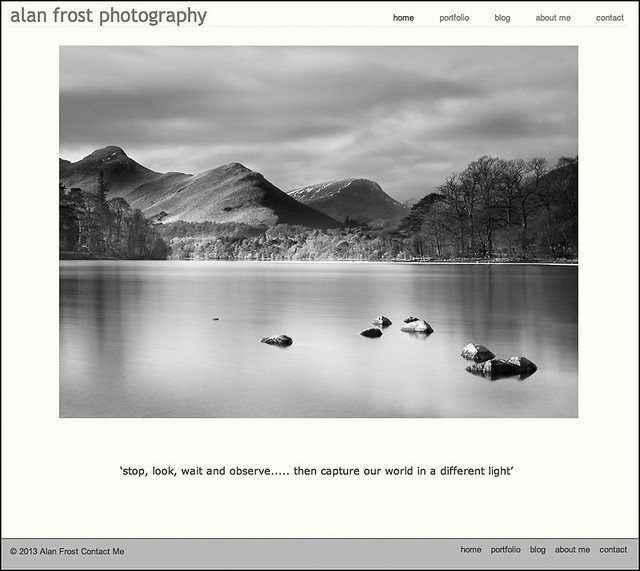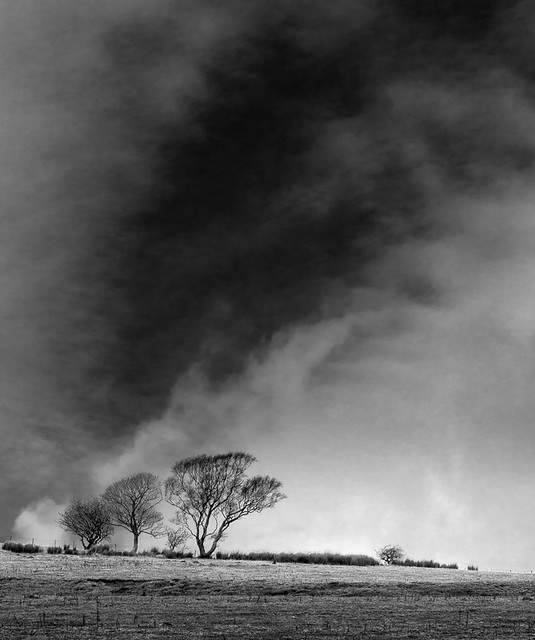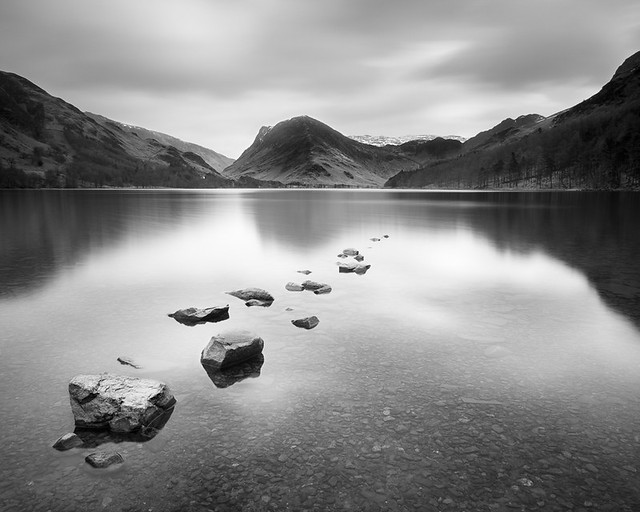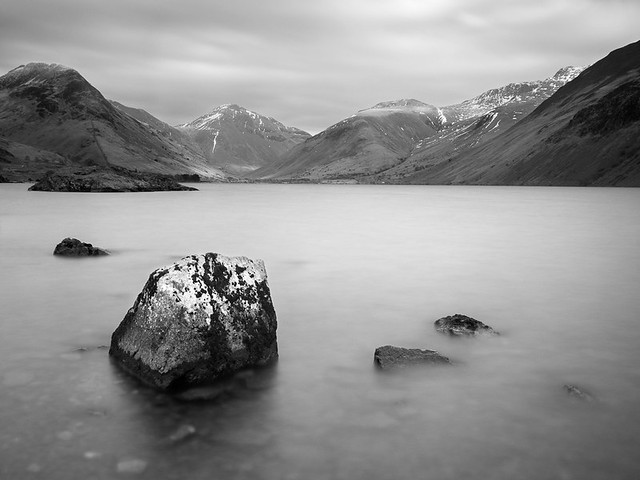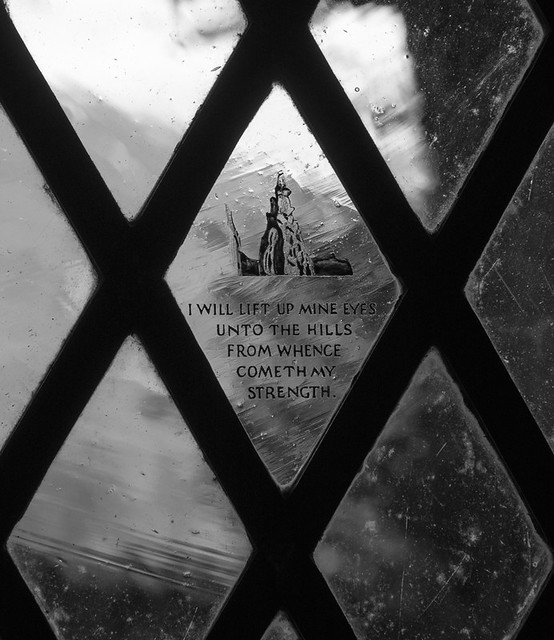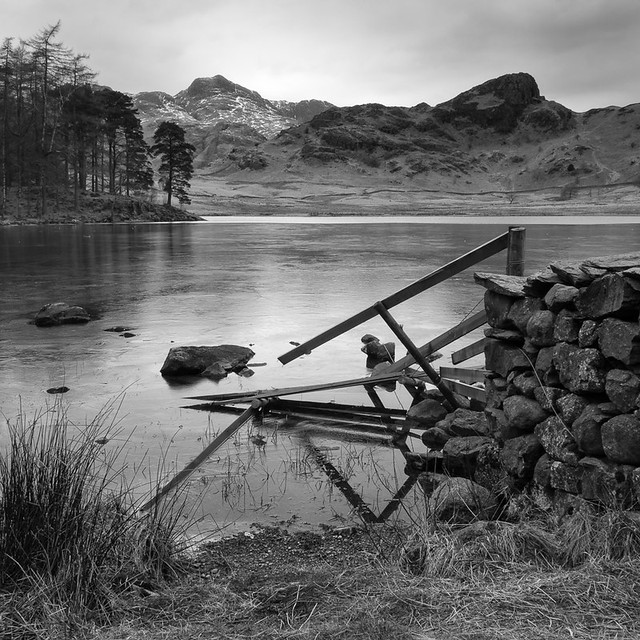Up until my trip away I had used a combination of Lightroom and Silver Efex Pro2. Rarely would I use Photoshop even though it's regarded as the 'daddy' of all software programs for image editing. Lightroom shares the same Raw converter as Photoshop and is a wonderful tool for your photographic workflow, from importing the images, key-wording, developing and finally to print or uploading to the web. However it does not touch Photoshop when it comes to the fine art of processing a really good black and white image. However I was daunted by the fact that the skills and knowledge to use Photoshop well, take a long time, so I was delighted when Paul demonstrated a few simple techniques which with a little practice I have now been able to apply to the shots I took on the trip.
In the following example the first image on the left is the original RAW file with no adjustments. It's just as it was when imported from the SD card into Lightroom. The reason for the blue colour cast is down to the fact that this was a 60second long exposure using the Hi-Tech 10 stop ND filter. The second image on the right has simply been converted to black and white and whilst the blue cast has been removed, the image is very flat. The third image is the finished photograph.
 |
| RAW file - straight out of the camera |
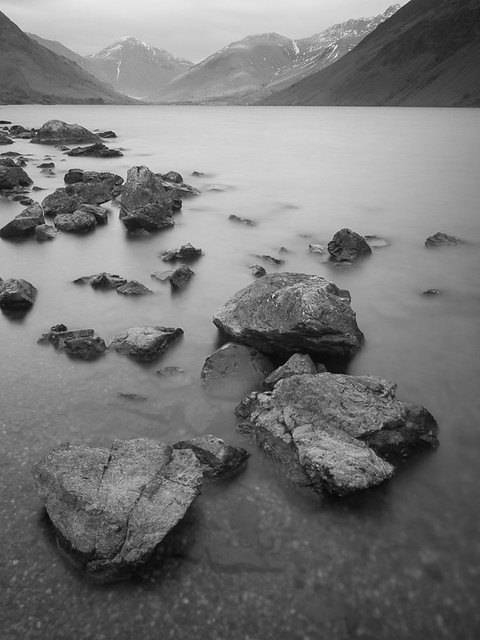 |
| RAW file with simple black and white conversion |
 |
| Wastwater Rocks - the final image |
So what simple steps were taken in Photoshop to arrive at this end result?
Well, firstly in Lightroom I applied a preset which boosted the clarity to a value of 15 and which also applied some sharpening. Amount 50 - Radius 0.5 - Detail 50 and Masking 0. The preset also eliminates any chromatic aberration created by the lens I used for this shot - the Panasonic f2.8 12 - 35mm. On this occasion CA would not have been visible given the blue colour cast.
Secondly I exported the image from Lightroom into Photoshop CS5. Using 'image - adjustment' I then converted the RAW image to black and white. This was followed by a 'levels' adjustment layer to move the black and white points on the histogram, to give a full range of tonal values. The 'mid point' can also be adjusted if required but was not changed for this particular shot.
The next stage was to make local adjustments to certain sections or specific areas of the image using the lasso tool to select the area and then apply a curves adjustment layer. The choice of 'pixel feather' is critical to make sure that the adjustment only applies to the area required. This is really where a small but subtle change can make quite a difference. I don't consider myself to be an artist but there is no question that these small changes are the equivalent of applying the finishing brush strokes to a painting. Poor technique in both cases could ruin a good image, the only advantage of Photoshop is that you can 'step backwards' or delete a layer. With a painting it would be much more difficult if not impossible to undo. Knowing when to stop is also very important. An image can very quickly look overworked. Once all the adjustments had been made all the layers were 'flattened'. (Layers - flatten image).
The last stage was to apply further sharpening using filters - unsharpen mask. Not all areas of an image require or should be sharpened; the sky for example, so a layer mask should used. I created a duplicate layer of the background layer and applied the sharpening to this new layer so the 'original' background layer remained unaltered. Once I was happy with the amount of sharpening (easily previewed) the again I 'flattened' both layers.
Finally I 'saved as' a TIFF file and gave the image a title. Once done this new image is saved in the same folder in Lightroom, so it appears alongside the original image. This is a great advantage as I can still go back and carry out another conversion should I wish.
I think there is still a place for Silver Efex Pro2 in my workflow. After all it has been my default plug in for black and white conversions until now. However my eyes have been opened to new ways of working and I am delighted to have learnt some new skills.
I think there is still a place for Silver Efex Pro2 in my workflow. After all it has been my default plug in for black and white conversions until now. However my eyes have been opened to new ways of working and I am delighted to have learnt some new skills.
Paul talked about other processing techniques and choices that need to be made before post Processing even starts and I will cover some of these key points in my next entry.
Tweet

